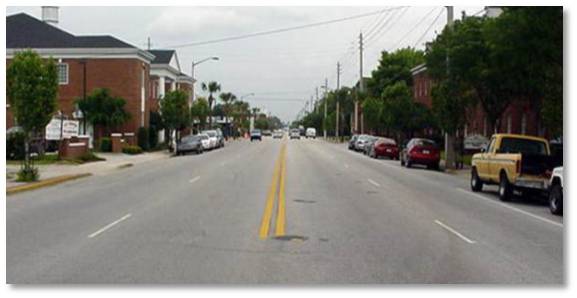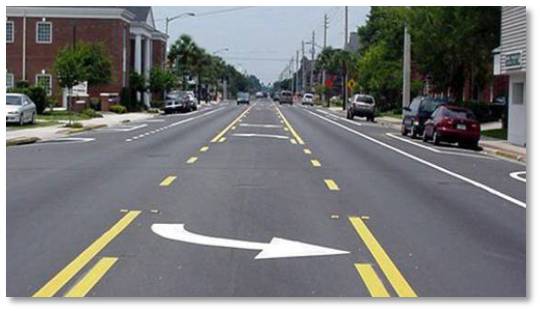Safety issue
In areas with a high number of access points, there can be numerous crashes due to turning vehicles. Conflicts with pedestrians and bicyclists are also a concern in areas with a high number of access points and turning vehicles.

Before

After
Safety design
A common roadway reconfiguration or "road diet" consists of converting a four-lane roadway (two lanes in each direction) to a three-lane roadway (one lane in each direction plus a center left-turn lane) and adding sidewalks and/or bicycle lanes.
Road diets reduce the number of vehicle conflicts which has been shown to decrease the number and severity of crashes. Road diets also improve safety for non-motorized traffic by providing designated spaces -- sidewalks and bicycle lanes -- that reduce conflicts between motor vehicles and other road users.
Benefits
- Decreases vehicle travel lanes for pedestrians to cross, therefore reducing pedestrians exposure to vehicular traffic
- Provides space for pedestrian crossing islands
- Improves safety for bicyclists when bike lanes are added
- Reduces rear-end and sideswipe crashes
Where are they being used?
- Road diets are happening on urban four-lane roadways with moderate traffic volumes and a higher proportion of turning traffic due to adjacent access.
- Road diets can be completed as part of routine repaving projects.